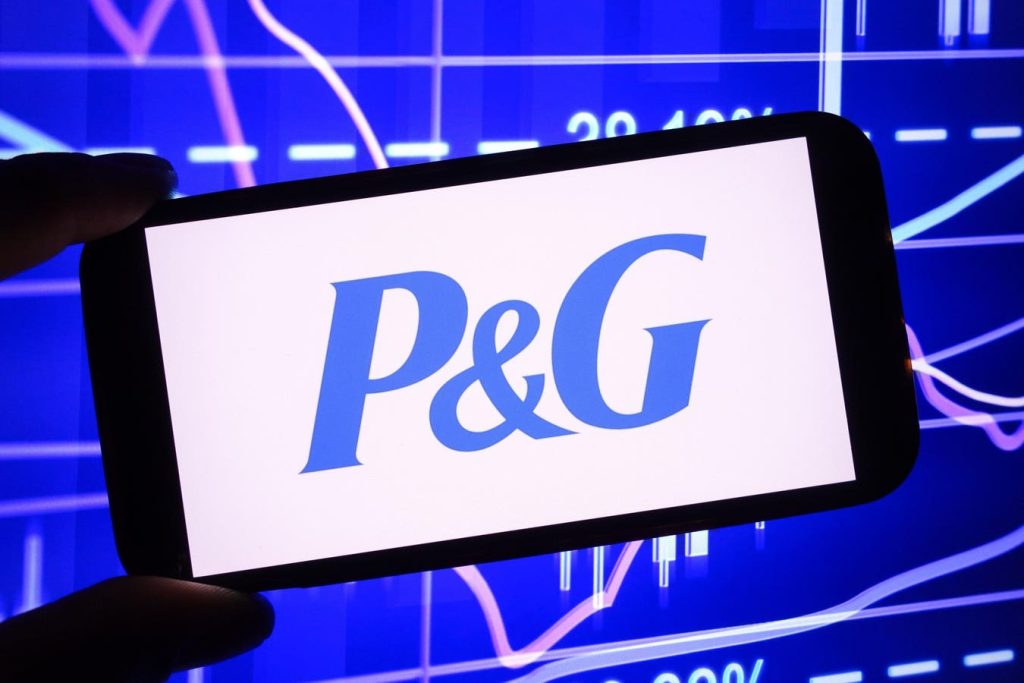Procter & Gamble’s Q2 2025 Performance: A Solid Beat Amidst Market Uncertainties
Procter & Gamble (P&G) delivered a strong second-quarter performance for its fiscal year 2025, exceeding market expectations on both revenue and earnings. The consumer goods giant reported revenue of $21.9 billion, surpassing the consensus estimate of $21.5 billion, and adjusted earnings per share of $1.88, beating the anticipated $1.86. This positive outcome was driven by increased demand for household staples, propelling P&G’s stock price up by 5% following the earnings release. This boost contributed to a 15% year-to-date gain, although still trailing the broader S&P 500 index’s 28% rise. Weakness in the Chinese market has been a persistent headwind for P&G’s stock performance. However, investors seeking more stable growth are pointed towards diversified investment portfolios, such as the Trefis High-Quality Portfolio, which has historically outperformed the S&P 500.
P&G’s 2% year-over-year revenue growth to $21.9 billion was underpinned by a 1% increase in volume and a 1% contribution from favorable product mix, offsetting flat pricing. Analyzing segment performance, Beauty sales remained flat year-over-year, with declines in skin and hair care offset by double-digit growth in personal care. Grooming sales saw a modest 1% increase, while Health Care revenue rose 2%, driven by product mix improvements. Fabric & Home Care also experienced a 2% uptick on volume growth, and Baby, Feminine & Family Care achieved a 3% increase due to strong family care product sales.
Despite revenue growth, P&G’s core operating margin contracted by 80 basis points to 26.2% in Q2. However, the company’s adjusted earnings per share still grew by 2% year-over-year to $1.88, thanks to the top-line growth and a reduction in outstanding shares, which more than compensated for the margin compression. Looking ahead, P&G maintains its organic sales growth projection of 3% to 5% for fiscal 2025, with earnings per share expected to land between $6.91 and $7.05.
PG Stock Performance and Outlook: Balancing Short-Term Gains with Long-Term Volatility
While the robust Q2 results spurred a 5% weekly increase in P&G’s stock price, a broader perspective reveals a more volatile trajectory. Over the past four years, P&G’s stock has experienced fluctuating returns: 21% in 2021, -5% in 2022, -1% in 2023, and 17% in 2024. This underscores the inherent volatility of individual stocks, particularly in uncertain macroeconomic environments. In contrast, diversified portfolios, like the Trefis High-Quality Portfolio, offer a smoother ride with consistently better risk-adjusted returns compared to the S&P 500. This portfolio’s lower volatility and superior performance highlight the benefits of diversification in mitigating market risks.
Considering the current economic uncertainty surrounding interest rate cuts and political transitions, the question arises whether P&G’s stock will experience another period of underperformance relative to the S&P 500, similar to 2021, 2023, and parts of 2024, or whether a significant surge is on the horizon. Current valuations suggest limited upside potential for P&G’s stock, with a target price of $175 per share, closely mirroring the current market price. This valuation is based on a price-to-earnings (P/E) ratio of 25x and anticipated adjusted earnings per share of $6.94 for fiscal 2025. The 25x P/E multiple aligns with the stock’s average over the past five years.
Comparative Analysis and Investment Strategies: Evaluating P&G in the Broader Context
While P&G’s stock appears to have limited room for growth in the near term, it’s crucial to assess its performance relative to its peers in the consumer goods sector. Peer comparisons provide valuable insights into the competitive landscape and can help identify potential investment opportunities. Benchmarking P&G against competitors using key metrics offers a more comprehensive understanding of its relative strengths and weaknesses, informing investment decisions in a complex and dynamic market.
Investors seeking superior risk-adjusted returns are encouraged to explore diversified investment strategies and consider portfolios like the Trefis High-Quality Portfolio. Such portfolios are designed to minimize volatility and maximize returns by spreading investments across a carefully selected basket of high-quality stocks. This approach offers a more stable and predictable investment experience compared to individual stock picking, especially during periods of economic uncertainty.
Key Takeaways from P&G’s Q2 Results:
- Strong Q2 performance with revenue and earnings exceeding market expectations.
- Positive impact from increased demand for household staples.
- Persistent headwinds from the Chinese market.
- Diversified portfolios, such as the Trefis High-Quality Portfolio, offer greater stability and superior risk-adjusted returns compared to individual stocks.
- Limited upside potential for P&G stock based on current valuations.
- Importance of comparative analysis with industry peers to assess relative performance.
Investment Considerations:
- While P&G’s Q2 results were positive, the stock’s long-term performance has been volatile.
- Investors seeking stability should consider diversified investment strategies.
- Comparative analysis and peer comparisons are essential for informed investment decisions.
- The current valuation suggests limited near-term upside for P&G’s stock.
This expanded summary provides a deeper understanding of P&G’s Q2 performance, its stock outlook, and the importance of considering broader investment strategies in the current market environment. It also emphasizes the value of comparative analysis and peer benchmarking in the investment decision-making process.










